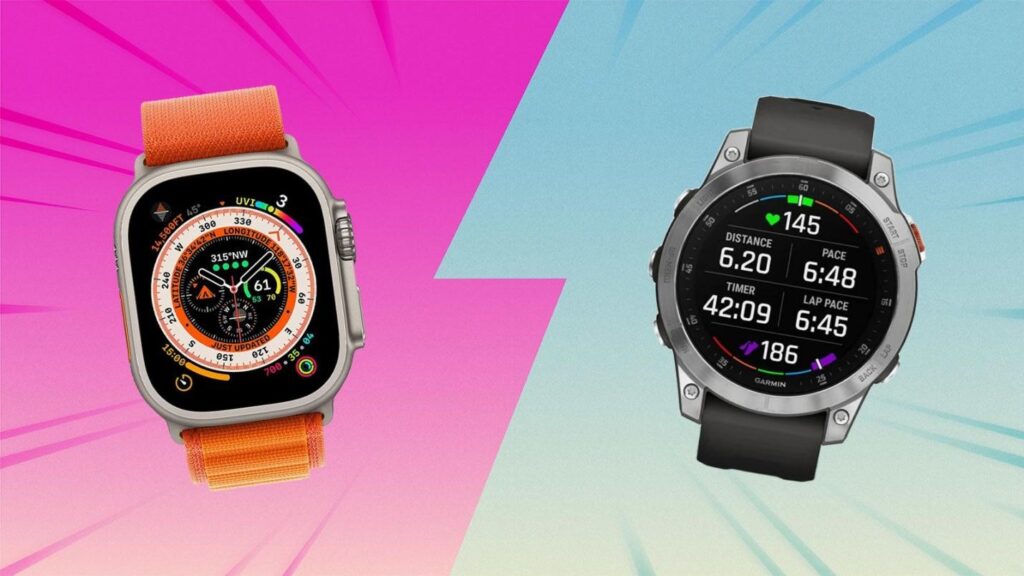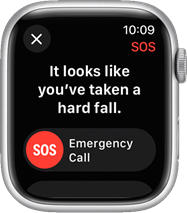Introduction
Smartwatches, as a subclass of wearable technology, become one of the revolutionary innovations because this transformed wearable technology to seamlessly fit in wearable devices in people’s lifestyle. These devices from Fitbit- like devices normally worn around the wrist to augmented reality glasses fix technology into the already existing societal interaction with the user environment environment. It will become apparent that the notion of embodiment is critical in analysing wearable technology in mediating the link between cognition and physicality, as well as digital systems. This critical response provides a critical response to the topic of wearable devices such as by using smartwatches as the prototypical embodiment of the technology. Apart from the features like health tracking and notification features, smartwatches are also an extension or even a part of the physical body. The present discussion examines the theoretical notion of embodiment, and the characteristics of smartwatches as technologies. By focusing on these aspects, it is planned to provide an evaluation of the qualitatively transformative role of smartwatches in the context of interaction with media-spatial environments.
Selected Theme: Embodiment
Embodiment can be defined as a phenomenon inherent in wearing devices where the products are incorporated in human body and systems thus facilitating better interaction between the two (Ferreira et al., 2021). According to Don Ihde, whose work phenomenology of human-technology relations, technologies interact with people by augmenting perceptual and cognitive faculties to define how people encounter the world (Rosenberger and Verbeek, 2024). In the case of wearable devices, this mediation is well seen as these technologies becomes part of the body and its processes.
The Extended Mind Hypothesis by Clark and Chalmers supports this account by reconsidering how tools — and associated technologies — can extend cognition beyond the head (Clark, 2024). Smartwatches provide a typical example of this extension by serving as an Information Attachment System, Decision Support System and Health Monitoring System respectively (Rapp, 2023). These devices do not just co-present with the body: Instead, these technologies insert themselves into physiological functions, becoming incorporated into the body (Makady, 2024).
A good example of this integration is smartwatches they come with real-time data, capability of allowing immediate interaction and simple interfaces that are congruent with the body movement (Ferreira et al., 2021).
Feeling Overwhelmed By Your Assignment?
Get assistance from our PROFESSIONAL ASSIGNMENT WRITERS to receive 100% assured AI-free and high-quality documents on time, ensuring an A+ grade in all subjects.
Analysis of Smartwatches
Smartwatches have become stylish wearables, over and above their primary function of being used as time pieces, with technological features that blend perfectly to enhance users’ lives (Lima et al., 2022). Fundamentally, they are health tracking devices with clearly seen features for tracking heart rates, blood oxygen levels, sleeping patterns, and even electrocardiogram (ECG) (Masoumian Hosseini et al., 2023). Such functions allow users to obtain timely information about their state of health and thus achieve primary health management. Moreover, smartwatch provides call, message, and social media notification so people are always connected. The practical usability of these tools is boosted by navigation aids which are based on GPS and mapping programs (Basha et al., 2022). By these features, smartwatches illustrate the concept of embodiment in that they fill both physical and mental abilities. Park et al. (2020) have aptly observed they provide an extension to the human body to support improved situational awareness and decision-making. For example, haptic feedback gives notification to the users in vibration, which is fully aligned with bodily sense. Cognitive abilities are also extended in similar ways as users delegation time management, workout, and search to their machines.

Figure 1: Apple Watch Ultra and Garmin Epix Gen 2
(Source: CNN, 2023)
Of central importance to this constant interaction is the interaction of smartwatches with IoT hubs. Regardless of being wearable devices, smartwatches work as interfaces to smartphones, wireless headphones, and sometimes even smart home systems as it is convenient to control and interact with (Chawla et al., 2023). For instance, it is possible to get updates on exercise data on the smartwatch when a user is listening to music and controlling the room’s light using voice commands (Kraft et al., 2020). Presumably, the most evident practical uses, like Apple Watch’s ability to detect a fall as depicted in Figure 2 or Garmin’s sophisticated fitness tracking, expose the disruptive potential of smartwatches (Singh et al., 2024). Additional support is given by screenshots of an interface or drawings of connections with other devices that illustrate these functionalities. Finally, smartwatches represent the wearable IoT devices, thereby integrating the material and virtual world and improving users’ experience and interactions with the technology.

Figure 2: Apple Watch Fall Detection
(Source: Apple Support, 2024)
Embodiment and User Interaction
Embodiment is technology’s integration into how people can use their bodies to extend and/or shape their abilities. The classic example for this concept would be smart watches which combine technology with physical selfness in a very dense and close way, augmenting senses and cognition. The integration with the human body is seamless with smart watches, where users can monitor their health metrics, receive alerts, control other near and far devices in real time (Luo et al., 2023). Embedding is clearly manifested in this integration, because the smartwatch is extended part of the user, their body and mind, influences their daily life.
Sensory innovations provide novel ways of increasing the level of embodiment by adding haptic feedback, which provides tactile responses to the user but does not require the user’s attention. For example, vibrations for alerts and navigational cues allow for smooth, non-disruptive interactions through touch (Benbunan-Fich, 2020). Further, smartwatches hold biometric sensors that also are used as an embodiment of the user’s health by tracking things like the user’s heart rate, the blood oxygen levels, and physical activity, thereby helping to make informed decisions and enable a sense of well–being (Verma et al., 2022).
Top UK Assignment Cities
In parallel, smartwatches are also intermediaries in the context of the physical and digital world surrounding users. In the physical world they are also utilized to extend the body’s capability to do things such as detecting falls or counting steps. In the digital domain, they function as interfaces to internet enabled systems, allowing control over smart home assets, access to virtual assistants and coordinating multiple technologies. The embodiment of wearable technology shows this fluid interaction between user and device and how this creates a seamless and integrated experience with surrounding world (Rieder et al., 2020).
Embodiment implies that smartwatches complement user’s physical body by adding more functionality in smoothest manner. The capabilities of the smartwatches are way more than that of just passing on some notifications. They act as extensions of the human body. For instance, smartwatches make use of the body’s physical processes, for example, by allowing users to monitor health metrics including heart rate, blood oxygen levels and activity level, which provides real time feedback that can help shape daily behaviour (Sun and Gloor, 2020). These devices represent the user’s health and enhance their physical self-awareness, and prompt them to make informed decisions about their well-being.
Haptic feedback further suffices as an example of embodiment, for instance in smartwatches where it creates an additional, organic layer of interaction from a pure sensory point of view. Alerts or navigation cues from the smartwatch are provided through vibrations so as to communicate with the user without being disruptive or being out of place (Metzger et al., 2021). Feedback in this form is the embodiment of the physical world and therefore the user can perceive it by means of their senses, without breaking up from the environment.
Similarly, the smartwatches also embody the world digitally, letting the users participate in the IoT ecosystem. Using the device, users can operate smart home gadgets, connect with virtual assistants, and even pair the smartwatch with other peripheral devices allowing you to form a bridge between the physical and digital world. In this thesis, this mediation between body and technology is understood as a manifestation of the fluid nature of embodiment in wearable devices (Saheb et al., 2022).
Top UK Assignment Samples
Conclusion
Smartwatches are the perfect example of the connection between the information technology and the body, illustrating the concept of embodiment in the framework of wearable devices. In this analysis, there were technological aspects of the smart devices which were described to include monitoring of health and connectedness; while there were smart sensory aspects which were outlined to include haptic and biometric senses. They raise physical and cognitive performance and indicate that smartwatches are indispensable interfaces between humans and their physical and virtual contexts. However, privacy, cybersecurity, and accessibility questions can no longer be ignored in order to provide fair and responsible inclusion. Given that smartwatches do not represent a radically disruptive technology when it comes to interaction with humans, a smartwatch’s potential is seen as greatly significant with reference to societal and cultural perspectives.
References
Apple Support (2024) ‘Use Fall Detection with Apple Watch’, Available [online] at: https://support.apple.com/en-in/108896 (Accessed: 10 December 2024)
Basha, N.K., Aw, E.C.X. and Chuah, S.H.W. (2022) ‘Are we so over smartwatches? Or can technology, fashion, and psychographic attributes sustain smartwatch usage?’, Technology in Society, 69, p.101952.
Benbunan-Fich, R. (2020) ‘User satisfaction with wearables’, AIS Transactions on Human-Computer Interaction, 12(1), pp.1-27.
Chawla, U., Iqbal, H., Singh, H.V., Mishra, V., Singh, S. and Choudhary, V. (2023) ‘A review on the Smartwatches as IoT Edge Devices: Assessing the end-users continuous usage intention using structural equation modelling’, ISARC. Proceedings of the International Symposium on Automation and Robotics in Construction, 40, pp.738-743.
Clark, A. (2024) ‘Extending the predictive mind’, Australasian Journal of Philosophy, 102(1), pp.119-130.
CNN (2023) ‘Apple Watch Ultra vs. Garmin Epix Gen 2: Which smartwatch is right for you?’, CNN Underscored. Available [online] at: https://amp.cnn.com/cnn/cnn-underscored/electronics/apple-watch-ultra-vs-garmin-epix-2 (Accessed: 10 December 2024)
Do, Y., Hoang, L.T., Park, J.W., Abowd, G.D. and Das, S. (2021, June) ‘Spidey Sense: Designing Wrist-Mounted Affective Haptics for Communicating Cybersecurity Warnings’, in Proceedings of the 2021 ACM Designing Interactive Systems Conference, pp.125-137.
Ferreira, J.J., Fernandes, C.I., Rammal, H.G. and Veiga, P.M. (2021) ‘Wearable technology and consumer interaction: A systematic review and research agenda’, Computers in Human Behavior, 118, p.106710.
Ferreira, J.J., Fernandes, C.I., Rammal, H.G. and Veiga, P.M. (2021) ‘Wearable technology and consumer interaction: A systematic review and research agenda’, Computers in Human Behavior, 118, p.106710.
Kraft, D., Srinivasan, K. and Bieber, G. (2020) ‘Deep learning based fall detection algorithms for embedded systems, smartwatches, and IoT devices using accelerometers’, Technologies, 8(4), p.72.
Lima, F.V., Kadiyala, V., Huang, A., Agusala, K., Cho, D., Freeman, A.M. and Druz, R. (2022) ‘At the crossroads! Time to start taking smartwatches seriously’, The American Journal of Cardiology, 179, pp.96-101.
Luo, Y., Yang, L., Ye, Q. and Liao, Q. (2023) ‘Effects of customization and personalization affordances on perceived value and continuance intention of smartwatch use’, Technological Forecasting and Social Change, 194, p.122752.
Makady, H. (2024) ‘Human, I know how you feel: Individual psychological determinants influencing smartwatch anthropomorphism’, Journal of Technology in Behavioral Science, 9(2), pp.369-386.
Masoumian Hosseini, M., Masoumian Hosseini, S.T., Qayumi, K., Hosseinzadeh, S. and Sajadi Tabar, S.S. (2023) ‘Smartwatches in healthcare medicine: assistance and monitoring; a scoping review’, BMC Medical Informatics and Decision Making, 23(1), p.248.
Metzger, M.J., Suh, J.J., Reid, S. and El Abbadi, A. (2021) ‘What Can Fitness Apps Teach Us About Group Privacy?’, in Privacy Concerns Surrounding Personal Information Sharing on Health and Fitness Mobile Apps, IGI Global, pp.1-30.
Park, S., Constantinides, M., Aiello, L.M., Quercia, D. and Van Gent, P. (2020) ‘Wellbeat: A framework for tracking daily well-being using smartwatches’, IEEE Internet Computing, 24(5), pp.10-17.
Rapp, A. (2023) ‘Wearable technologies as extensions: a postphenomenological framework and its design implications’, Human–Computer Interaction, 38(2), pp.79-117.
Rieder, A., Lehrer, C. and Jung, R. (2020, June) ‘Affordances and Behavioral Outcomes of Wearable Activity Trackers’, in ECIS.
Rosenberger, R. and Verbeek, P.P. (2024) ‘DON IHDE: 1934-2024’, Journal of Human-Technology Relations, 2.
Saheb, T., Cabanillas, F.J.L. and Higueras, E. (2022) ‘The risks and benefits of Internet of Things (IoT) and their influence on smartwatch use’, Spanish Journal of Marketing-ESIC, 26(3), pp.309-324.
Singh, B., Chastin, S., Miatke, A., Curtis, R., Dumuid, D., Brinsley, J., Ferguson, T., Szeto, K., Simpson, C., Eglitis, E. and Willems, I. (2024) ‘Real-world accuracy of wearable activity trackers for detecting medical conditions: systematic review and meta-analysis’, JMIR mHealth and uHealth, 12(1), p.e56972.
Sun, L. and Gloor, P.A. (2020) ‘Measuring Moral Values with Smartwatch-Based Body Sensors’, in Digital Transformation of Collaboration: Proceedings of the 9th International COINs Conference, Springer International Publishing, pp.51-66.
Verma, A., Moghaddam, V. and Anwar, A. (2022) ‘Data-driven behavioural biometrics for continuous and adaptive user verification using Smartphone and Smartwatch’, Sustainability, 14(12), p.7362.
Explore Recent Blogs
-
How to Choose the Right Nursing Topic for Your Final-Year Projectby Amelia on July 8, 2025
Nursing is a competitive course offering a promising career for students. It is rigorous and demands up to date knowledge of the subject, good assignment writing, and field practice. Hence scoring good marks in nursing… The post How to Choose the Right Nursing Topic for Your Final-Year Project first appeared on Digi Assignment Help.
-
How to Use Pandas for Data Wrangling in UK Statistics Courseworkby Amelia on July 7, 2025
Python has emerged as a popular language in recent years. It uses multiple tools for effective programming. One of its features is the Pandas library. Pandas is a famous Python data manipulation package. It is… The post How to Use Pandas for Data Wrangling in UK Statistics Coursework first appeared on Digi Assignment Help.
-
How to Approach Public Health Assignment Questions in the UKby Amelia on July 7, 2025
Public health is core to any health setup. Every nation, including the UK, focuses on building a strong public health sector. In academics as well, it is A fundamental topic. It plays a big part… The post How to Approach Public Health Assignment Questions in the UK first appeared on Digi Assignment Help.
-
How to Write a Family Law Assignment for UK Universitiesby Amelia on July 4, 2025
Family law isn’t all about divorce scandals in the popular press—it’s a core subject in all qualifying law degrees and postgraduate law courses in the UK. Whether your area of interest is parental responsibility issues,… The post How to Write a Family Law Assignment for UK Universities first appeared on Digi Assignment Help.
-
How to Write a Psychology Case Study: A UK Student’s Guideby Amelia on July 1, 2025
Psychology is an interdisciplinary field. It includes many subjects to write a good psychology paper. The standard is higher in UK universities, which are strict on format, dense subject knowledge, and correct research. Writing a… The post How to Write a Psychology Case Study: A UK Student’s Guide first appeared on Digi Assignment Help.
-
How to Write a Biology Assignment Conclusionby Amelia on June 30, 2025
Every assignment should have a strong conclusion. It is the step where the reader revises the topic. Hence, it should be clear, easy to read, and subtly address the complex topics. The same applies to… The post How to Write a Biology Assignment Conclusion first appeared on Digi Assignment Help.






